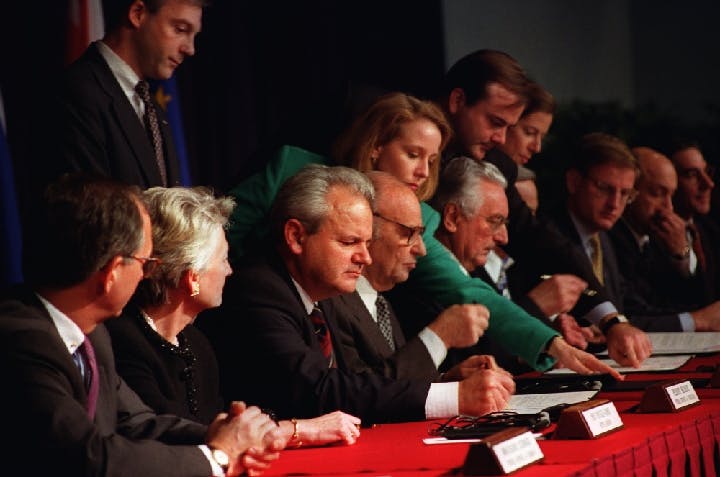Winter 2016
How Deep Is Dayton?
– Anna Ohanyan
Assessing the regional impact of the 1995 Dayton Accords.
Borders, Trade, and Terrorists
In an age in which both terrorism and trade are increasingly global, border politics has become particularly contentious. While forces of free trade and global supply chains push for ease of transborder access, terrorism, migration, and refugee crises are provoking policies that are inclined in the opposite direction. Such policies fuel calls to erect walls, often physical ones, to keep out terrorists and illicit traffickers, as well as migrants and refugees — or so the argument goes. Many policymakers within the European Commission favor a middle course, talking of “smart borders” designed to let trade in while keeping terrorists out. This current debate about “smart borders” and border politics could benefit from often-overlooked lessons learned in the Western Balkans after the 1995 Dayton Accords, which helped to usher a new era of subnational and territorially cross-cutting governance in that region.
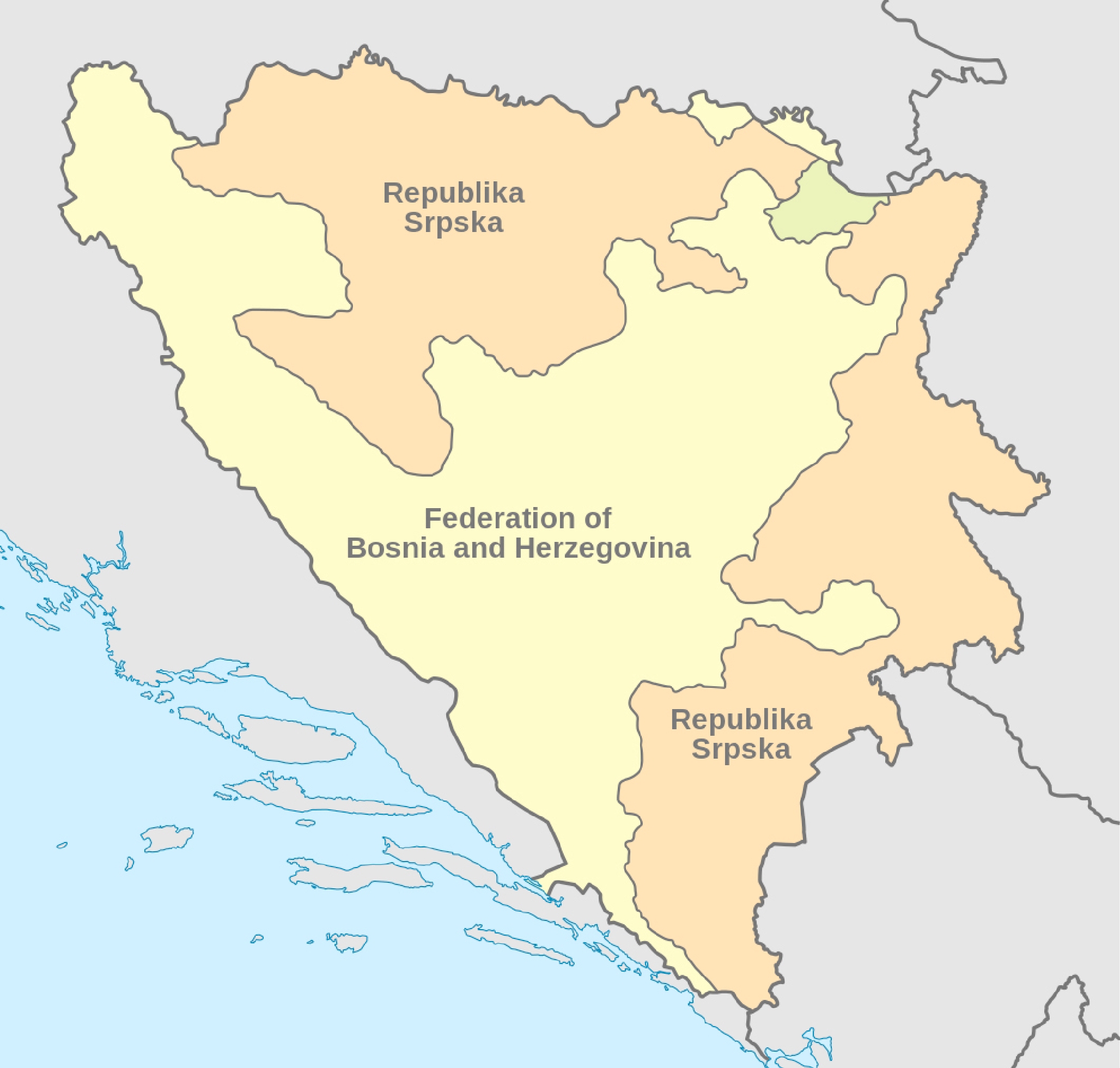
The Dayton Accords are credited with ending the bloody wars in the Western Balkans and shaping the political foundations of Bosnia and Herzegovina (BiH). In 2015, the 20th anniversary of the accords was marked on both sides of the Atlantic, yet the mood in BiH and in international policy circles has been rather somber. The authorities within the predominantly Serbian Bosnian entity, the Republika Srpska (RS), have called for a referendum on secession, sending yet another signal to Sarajevo and Brussels that at least the RS political elites continue to favor independence from Bosnia. The West, as well as the central authorities in BiH, view such political messages as destabilizing and challenging to the fragile security established by Dayton. One small hope for improved stability lines in the European Union (EU); in February 2016, BiH formally applied for EU membership. Although this application is unlikely to lead to actual membership within the next five years, EU leaders regard it as a useful tool to quell the internal political and ethnic divides in the country.
The Dayton Accords often are perceived as the most visible cause of the political fracture that characterizes modern BiH.
Nevertheless, BiH’s poor socioeconomic indicators, reflecting high unemployment and poverty rates, have been particularly disheartening. The Dayton Accords are often criticized for creating ethnically locked layers of administrative structures that increase the cost of doing business in the country and fuel corruption among political elites. These factors undeniably have served to engender persistent secessionist tendencies in RS. Indeed, the Dayton Accords often are perceived as the most visible cause of the political fracture that characterizes modern BiH.
To date, discussion of this issue has focused inward, generating debate around constitutional reforms and a strengthening of political institutions at the country’s center. However, on the 20th anniversary of the agreement, what remains largely missing from the discourse on BiH is the story of subnational regionalism in the Western Balkans made possible by the Dayton Accords. Publicity-grabbing exchanges from across BiH’s political spectrum and ethnic lines have left little room for the quiet policy initiatives that are cultivating cross-entity and region-wide networks of professionals and civil servants. These ties and networks in a variety of issue areas have added up to a comprehensive system of regional governance that exists today in the Western Balkans. As experiences of regional governance around the world have shown, this is one way to strengthen the state. For BiH, this emergent regional governance essentially has amounted to state-building through a back door.
The post-Dayton experience of regionalism in the Western Balkans is potently relevant for current debates on global security: combating terrorism without shutting doors is a broadly shared ambition of national and international policymakers.
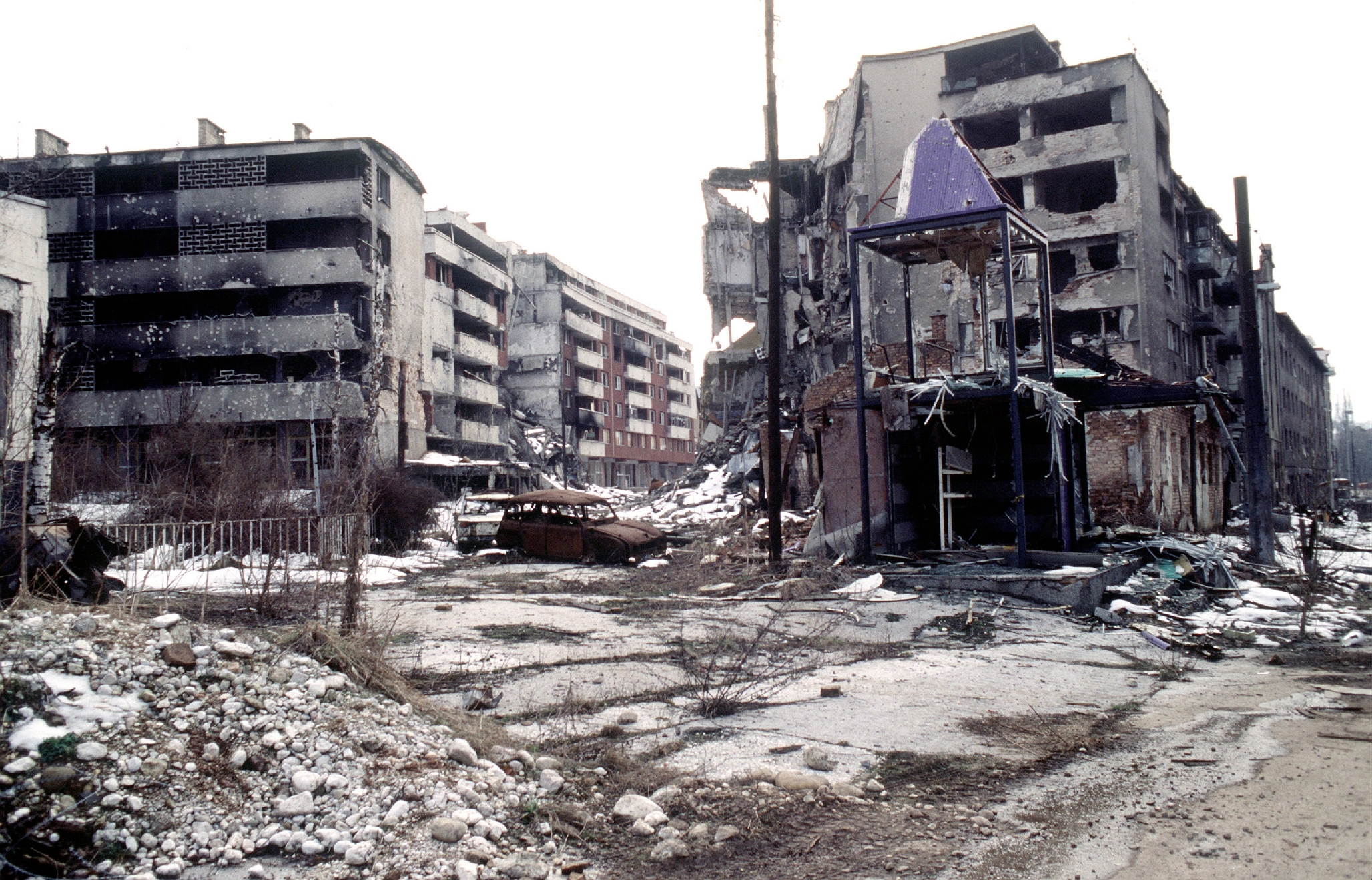
Regionalism Revisited: The Western Balkans’ Experience
The need to institute order in the context of either “hot” or “frozen” conflicts scarcely has been more urgent than it is today. The costs of festering conflicts are heightened and made more visible in the example of the globalization of terrorism. From 1989 to 2014, 88 percent of all terrorist attacks occurred in countries that were experiencing or were involved in violent conflicts. Against the backdrop of civil war in Syria and extremist Islamist attacks in Europe, calls for long-term solutions to build regional-based order in the Middle East are gaining momentum. Whether in eastern Ukraine, the south Caucasus, or sub-Saharan Africa, existing bilateral and multilateral security infrastructures increasingly are under strain. The declining readiness of Western powers to police hot spots around the world has added urgency to the development of fresh approaches and ideas to update the global security infrastructure. The post-Dayton experience of the Western Balkans, characterized by regional integration with persistent political cleavages and fresh societal wounds, is therefore highly instructive.
The experience of the European regionalism has been hard to replicate elsewhere in part because its two key building blocks, democratic nation-states and the strength of their institutions, are in short supply in regions of frozen or active conflict.
Indeed, the capacity of regional commerce to cultivate political cooperation has always captured the imagination of policymakers, dating back to Joseph Schumpeter’s theories of the pacifying interaction of capitalism and democracy. As far back as the beginning of the 19th century, building regional security orders by shaping regional markets has been tested in South America, southern Africa, and many places in between. Still, it is the EU that remains the archetypal brand of regionalism. Yet the experience of the European regionalism has been hard to replicate elsewhere in part because its two key building blocks, democratic nation-states and the strength of their institutions, are in short supply in regions of frozen or active conflict. On the other end of the regionalism spectrum are sub-Saharan Africa, the Middle East, and now the post-Soviet Eurasian space, where regional organizations have been created by political elites in part to join forces to suppress internal dissent. These models are often described as “dictators’ clubs,” and their record of providing meaningful security inside and outside of their regions has been largely disappointing.
The post-Dayton experience of the Western Balkans offers concrete lessons for building security orders in politically unstable areas. It has demonstrated a way to identify and support genuine stakeholders of regional engagement in a context of weak political support from national institutions and persistent conflict cleavages in society. This lack of strong national institutions to support subnational regionalism has been a persistent problem in conflict regions in the developing world, and the experience of the Western Balkans offers one potential response to it.
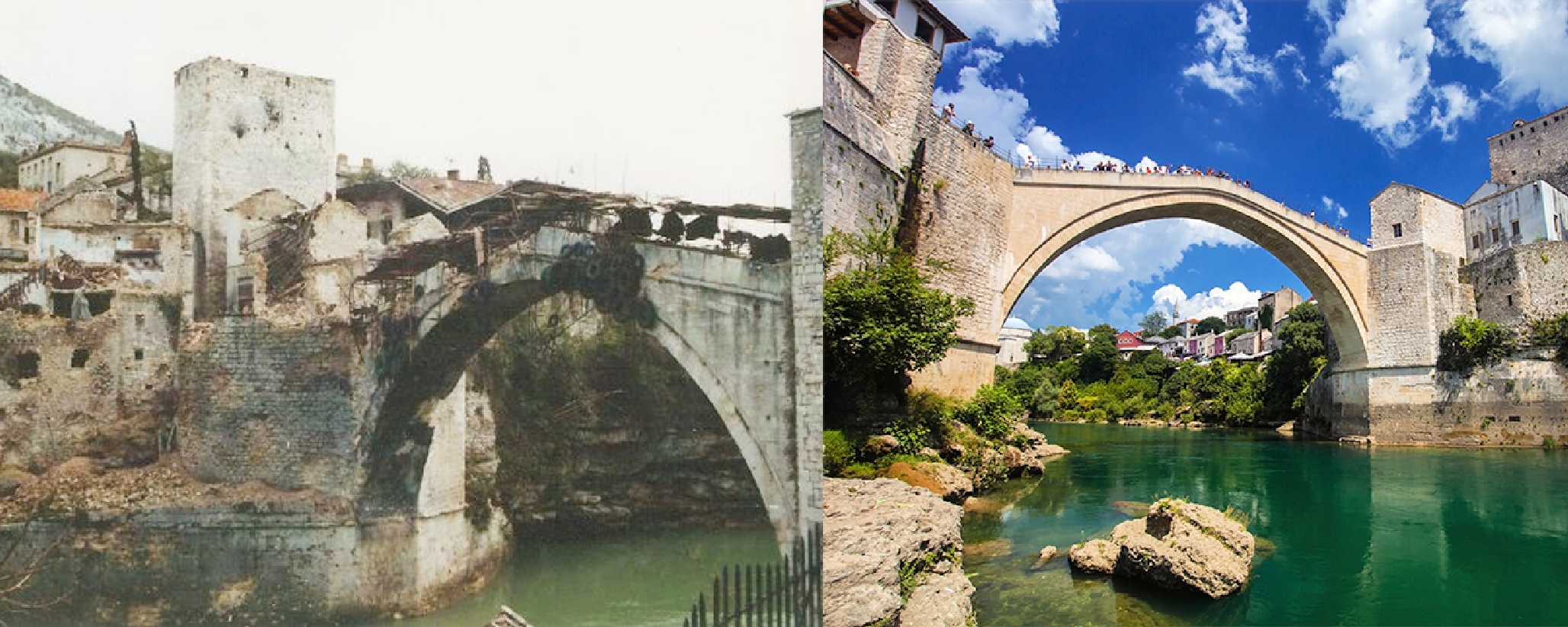
Taking Stock: The Neighborhood Effect of the Dayton Accords
Ending the war and starting an internationally sponsored state-building mission in BiH have been the most frequently cited credits for the Dayton Agreement. Equally important, but perhaps less appreciated, has been the creation and consolidation of a quilt of regional organizations and institutions that has blanketed the young state and aided its recovery from the wounds of division, conflict, memories, and polarization. Under the political and institutional umbrella provided by the Dayton Accords, BiH succeeded in forging meaningful and institutional internal cooperation by establishing regional links within the Western Balkans.
To some extent, the transformation of BiH into a regionally integrated actor can be credited to economic and political liberalization. However, a closer look reveals that market forces and democratic values should not be overestimated when it comes to peacebuilding. A deliberate and strategic cultivation of regional ties, facilitated by Dayton, has been a key factor enabling regional stability and rebuilding this formerly shattered regional neighborhood. When comparing the case of BiH to conflicts in the south Caucasus, Dayton’s remarkable success in building regional governance and stability becomes more pronounced. The south Caucasus is an institutional desert, and the lack of strong region-wide institutions has made it highly vulnerable to divisive and polarizing politics between greater powers.
One of the most important lessons of the Bosnian experience with regionalism has been that, in politically divided areas, simply calling for “more trade” or “more regionalism” is insufficient.
As a constituent part of the former Yugoslavia, BiH is no stranger to regional projects. However, the story of regional integration in Balkans has been one of tests and travails; the violent rupture of Yugoslavia rendered it particularly challenging to re-create economic and other functional ties at a regional level. While the relatively peaceful breakup of the former Soviet Union left a dearth of meaningful, sustainable regional projects, the disintegration of Yugoslavia produced a slow but steady stream of regional organizations and region-wide treaties. Considering the violent process of Yugoslav disintegration, this has been an impressive achievement indeed. Since the Dayton Accords, BiH has been a member of no less than 14 regional institutions and regional agreements, from transport and maritime cooperation, security sector reform, and socioeconomic development, to water management, to name a few. Such a breadth and scope of regional cooperation, often in highly technical and specialized areas involving functional ministries, has helped strengthen region-wide governance for the Bosnian state.
In economic terms, between 2000 and 2005, the value of intraregional (Western Balkans, Romania, and Bulgaria) exports grew from $2.9 billion to some $7.6 billion, while imports expanded from 2.7 billion to $7.8 billion. Although such regional trade flows were not particularly significant as share of the larger EU market, an International Monetary Fund report still registered enhanced levels of intraregional trade since 2000. Some analysts highlight BiH as among the most active traders in this period. Contrast this with the regional trade patterns in the late 1990s. According to economist Vladimir Gligorov, who has written widely on trade and investment in the Balkans, for many Balkan countries their Balkan neighbors were not significant trading partners, and for some the other Balkan countries were not trading partners at all, with the EU being the dominant export market for all countries in the region.
How Did Dayton Do It?
One of the most important lessons of the Bosnian experience with regionalism has been that, in politically divided areas, simply calling for “more trade” or “more regionalism” is insufficient. Instead, regional agreements need to be structured in such a way that they offer optimal opportunities for conflict management processes and enhance long-term security prospects. Not all regions are created equal in their security-building credentials. Regional cooperation in the post-Dayton Western Balkans created specific openings, as well as limits, for building and consolidating long-term, durable, and functional peaceful coexistence. BiH’s regional profile within the Dayton framework offers important lessons for peacebuilding processes in other conflict regions. Its stable, albeit admittedly “negative” peace, has shown that types of ties matter for the patterns of peace.
Calls for regional cooperation in the Western Balkans are often met with suspicion in Sarajevo. “We spilled blood to separate. Are you trying to put Yugoslavia back together again?” is a common sentiment, as one respondent phrased it in an interview with the author in 2008. In his 2011 overview of Balkan regional cooperation, Dimitar Bechev has noted that trade liberalization efforts in the 2000s bolstered economic ties across the territory of former Yugoslavia and added credibility to such contentions. So what is different about the current regional integrative models as advanced by the EU compared with, for instance, the former Yugoslavia as a regional model of political and economic life? How does the current regionalism that is being advanced and championed in the Western Balkans differ, if at all, from the Russia-led Eurasian Union?
Regional projects in the Western Balkans in the post-Dayton period have had many different characteristics. The four most relevant features of their peace dividends are as follows:
The first characteristic is ownership: who is driving the regional projects? Who owns regional projects? Who are the stakeholders that are supporting or opposing regional integration? The post-Dayton experience demonstrates that various groups are differently organized and prepared to take advantage of greater regional ties. The larger markets in more integrated regions may benefit small and medium enterprises, but this sector may not be organized politically to advocate for it. Instead, inward-looking political elites who benefit from politically fractured spaces may have the power and tools to keep the region from integrating.
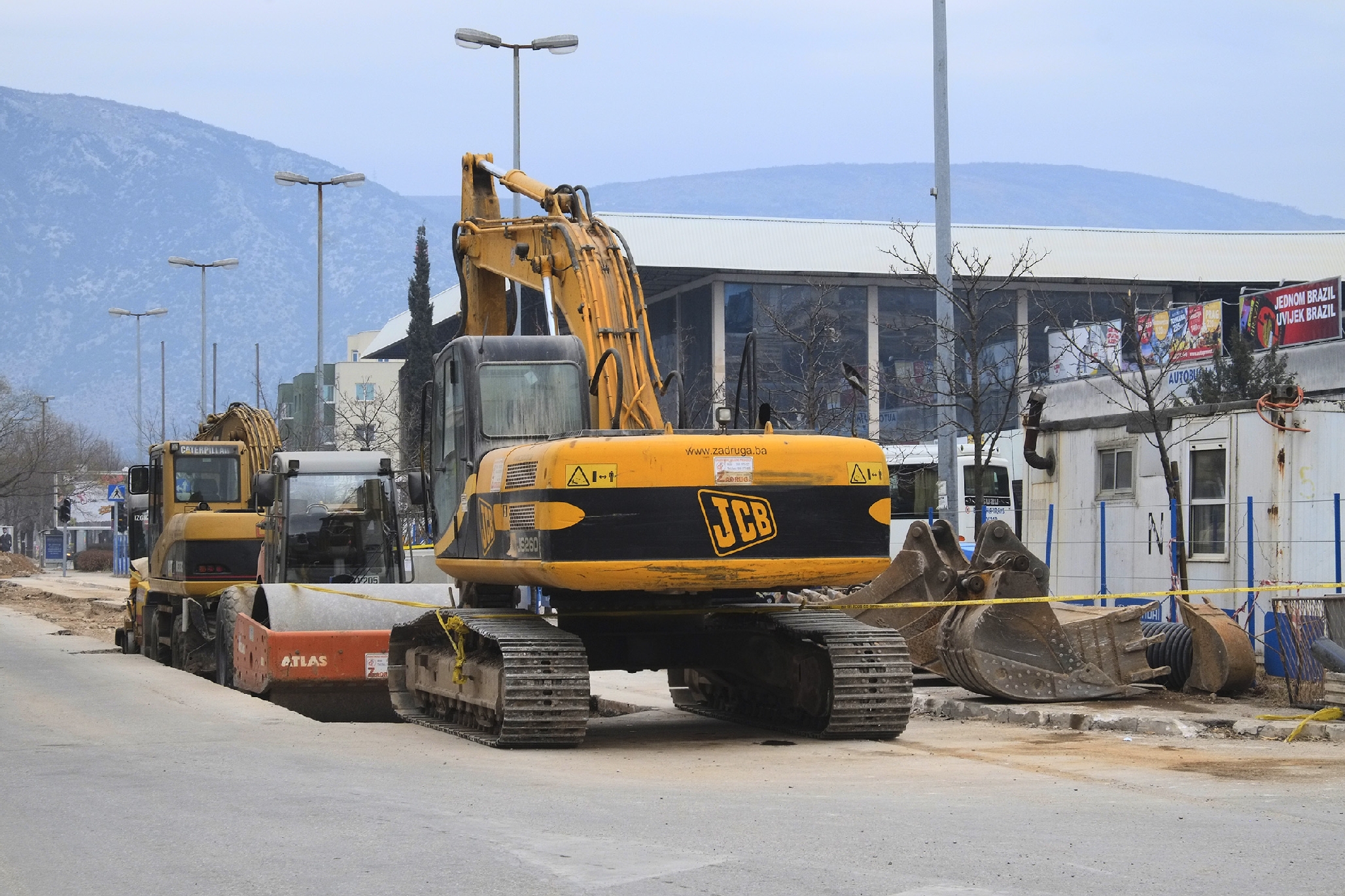
Moreover, two regional and often contradictory currents have been building in the Western Balkans. Within the business sector, many companies have established regional initiatives, largely capitalizing on their prewar ties with associated organizations in the former Yugoslavia. Business leaders have pointed out in interviews that many companies reemerged after the war under different names, and that individuals working in such companies often revived their prewar ties across the region. Although trade structures changed after the war, with trade levels falling to less than one-third of prewar levels in some cases, over time the countries of the former Yugoslavia maintained and in some cases increased their shares of trade with other former republics. Such regional ties in the business sector were organic, with distinct bottom-up processes of regional development.
Now, contrast these connections with those of politicians and government institutions that are advancing regional projects within the European umbrella. Such top-down ownership of regional processes has proven less effective. Senior officials from the Regional Cooperation Council in Sarajevo noted that national governments would often send junior members of governments, who lacked any authority to advance regional projects in meaningful ways, to regional meetings. Indeed, despite European pressure to regionalize national politics in the Balkan countries, political elites often have viewed such projects as a threat to their power. Respondents in BiH also highlighted a widely documented tendency among the political elites to derive their political support from exclusionary rhetoric and engage in a “blame game” across borders to political ends.
In short, while economic regional ties are building up, political support for regional integration from the top has been less forthcoming. In the words of BiH government official Amer Kapetanovich, there is still an ongoing fight between the rational forces of integration and business on the one hand and the retrograde groups of ethnic nationalism on the other.
The second characteristic of regional models is their institutional design: who is in the back seat? For regional projects in politically divided areas to become sustainable, each member state must have appropriate institutional bases. In terms of such institutional support, the regional projects in the Western Balkans vary from one issue area to the next. Although a comprehensive regional governance system across the Balkans is still beyond reach, significant steps to that end are being undertaken. Prospects of EU accession have been an important incentive for building regional systems of governance from the top down. But very real regional problems still require collective regional actions. Highly institutionalized regional networks are present in the justice, home affairs, and security areas, yet increasingly regional criminal activities and crippling war legacies in the Western Balkans are affecting the political and economic life in the countries. Strong criminal networks often have thrived because of the weakness of state institutions.

In this issue area, specialized EU institutions have joined forces with NATO, the Regional Arms Control and Verification and Implementation Assistance Center, and the Organization for Security and Cooperation in Europe to create a regional security governance system, ranging from defense to intelligence cooperation. In 2012, Virgil Ivan-Cucu of the Regional Cooperation Council pointed out that the organization of criminal networks in the Western Balkans, a “malignant form” of regionalism, had become powerful, and countering them required the ability to share information in real time and obtain acceptable evidence from other locales such as Ankara, Dubrovnik, or Paris. This regional security network has evolved into a strong tool for fighting organized crime. Although the links between individual governments and organized criminal networks often still persist, the case of regional security cooperation and the persistent weakness of states illustrate how regional ties can be used to compensate for the weak center of the state, creating a phenomenon of state-building through a “back door.”
The third characteristic is inclusive, diverse membership: who is left out, and does it matter? Regional projects and systems of governance that are inclusive and have a broad membership are politically more sustainable and hold greater value for long-term regional security and peace. The extent to which regional systems in the Balkans are inclusive varies. Some regional initiatives are designed to connect the grassroots to regional and global systems of governance, but others have remained somewhat exclusive with limited reach to the broader population.

Such inclusive networks can connect not only local, regional, and global institutions, but can also bring in the private and public sectors in a productive interface. One example of a highly inclusive regional network in the western Balkans is the Network of Associations of Local Authorities of South-East Europe. This network has brought together local and global actors into a single structure; it has empowered local levels of administration to build foundations for cross-border trade. Another example is the South East Europe Regional Network for Qualifications Frameworks, established to provide a platform for exchanging ideas and experiences among member countries in accordance with the European Higher Education Area. This network also connects government authorities and institutions of higher education with those in the EU.
In contrast to highly inclusive regional networks in economic and social development, regional cooperation in political and military issue areas has lacked political will among national administrations. In these issue areas, regional projects have been exclusive and insufficiently rooted in the broader societies of member states.
A fourth characteristic is the balance of power, financial and institutional, inside the regional network: Who is paying for the trip? The extent to which a regional project is sustained, financially or institutionally, by one or two actors or by a larger number and broader base of supporting organizations advancing regional projects can also make or break the project’s long-term prospects. The Western Balkans, and BiH in particular, are highly dependent on EU support — or lack thereof. For BiH, donor dependency has been a problem for many years. In terms of regional dynamics, the EU has been instrumental in sustaining regional networks across various issue areas. It has been a key provider of political, financial, and institutional resources to various types of regional networks. As EU financial support has declined, regional networks in the Balkans have begun to diversify their funding lines, and some have moved toward collecting membership dues to consolidate their regional structures. Membership dues are emerging as a key source of income for issue-specific regional institutions in the context of declining EU funding. Two noteworthy examples are the South East Europe Regional Network for Qualifications Framework, and CASEE, a regional network in education institutions related to life sciences (agriculture, food, biotechnology, natural resources, rural development, and the environment).

The New Deal in Dayton
Moving forward in BiH also means moving away from the state-centric thinking of the Dayton Accords. The problems of the weak administrative capacities of the Bosnian center and the reduced political will for strengthening that center should be recast in regional terms. “Rescuing” the Bosnian state from inward-looking politicians calls for solid support for, and the empowerment of, outside-looking stakeholders of regional cooperation. This can be achieved partly through fostering a substate regionalism of professional associations and partly through cultivating a new, regional deal that can deepen Dayton in BiH as well as its neighborhood. It may be time to reinvent the wheel in BiH by supporting regional projects. However, this time around, a more high-tech prototype may come in handy.
* * * * *
Anna Ohanyan is the Richard B. Finnegan Distinguished Professor of International Relations and chair of the department of political science and international studies at Stonehill College in Easton, Massachusetts. Her latest book, derived from her fieldwork in the south Caucasus and Western Balkans as a Fulbright Scholar, is Networked Regionalism as Conflict Management.
Cover photo courtesy of Wikipedia
